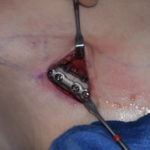Plastic Surgery Case Study – Female Nasal Implant Augmentation Rhinoplasty
Background: Rhinoplasty surgeries fundamentally fall into the three main types, reductive, rehaping and augmentative. A reductive rhinoplasty is where bone and cartilage tissues are removed and none are added and the overall goal is to make the entire nose smaller. A reshaping rhinoplasty is where most of the manipulations are done by suturing and small Read More…


